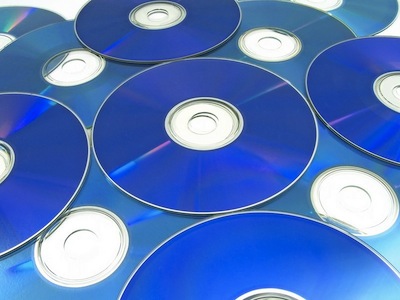New Encoding Tech May Bring Billions of Color to Blu-ray
One company is looking to bring 12-bit color encoding to Blu-ray.
Earlier this week, a company called Folded Space said that it has created encoding/decoding algorithms that will bring deeper color to media such as movies and TV shows, which are filmed using high dynamic range digital cameras. This set of algorithms is called DCE (Deep Color Encoding), and will process original content with 12 bits per color instead of the current 8 bits.
"With DCE, studios can now release Blu-ray discs and even next generation UHD/4K physical media to support what's commonly considered to be the most important, most visual improvement in next generation video," said John Schuermann, who leads business development for Folded Space.
Although the wave of 4K UHD TVs, Blu-ray players and other equipment is beginning to saturate the market, most of the media that will play on these devices are encoded with 8 bits per color channel. When you look at the media up close and personal, it's easy to see color "banding," or rather a failed attempt to blend several colors together.
That said, encoding media in 10-bit, 12-bit and even 16-bit will eliminate banding because there are billions of colors to use. Folded Space's DCE can do this while keeping the content roughly the same size as the 8-bit version, and while preserving backwards compatibility. That means one Blu-ray disc will cough up a movie that works on 8-bit and 12-bit players.
Of course the big drawback is getting the industry to accept the new technology. This would not only apply to the media burned on a Blu-ray disc, but the optical drives that read them as well. That means devices would need to be on the Internet to receive a firmware update that supports the algorithms.
"The company's proprietary yet simple and fast algorithms process original content with 12-bits per color and imperceptibly encode information about the fine color detail into a standard, backward compatible 8-bit Blu-ray disc," reads the company's press release. "Newer displays and Blu-ray players with the decoding algorithm can then restore a 12-bit equivalent of the original image in support of much greater color range of recently announced displays."
Folded Space plans on licensing the encoding algorithm to software partners free of charge to "stimulate" deep color and high dynamic range content production as soon as possible. The company also plans to license the decoding algorithm to player and display partners for a "modest" fee.
Get Tom's Hardware's best news and in-depth reviews, straight to your inbox.
For more information about Folded Space and DCE, head here.

Kevin Parrish has over a decade of experience as a writer, editor, and product tester. His work focused on computer hardware, networking equipment, smartphones, tablets, gaming consoles, and other internet-connected devices. His work has appeared in Tom's Hardware, Tom's Guide, Maximum PC, Digital Trends, Android Authority, How-To Geek, Lifewire, and others.
-
xenol Either I don't care or I don't see it, but color banding never really seemed to bother me. I would think that the film editor would be cautious about scenes that may produce banding as well...Reply -
InvalidError You can already have 10bits with plain old h264 and streams encoded in "hi10" often end up smaller for a given quality due to reduced pixel noise/errors.Reply
While banding with 8bits usually is not too bad, there are times where it can be distracting enough to make me wish 10bits was more common. -
Kewlx25 Reply12545195 said:Either I don't care or I don't see it, but color banding never really seemed to bother me. I would think that the film editor would be cautious about scenes that may produce banding as well...
With that attitude, lets just go back to black and white to save space. -
Banding is especially noticeable in dark scenes.Reply
Normally, movies try to avoid banding using dithering. This is particularly bad for compression of animations (cartoons, if you wish), where there's usually huge blocks of single-tone colors, or very regular gradients that are easy to compress.
I certainly look forward to the day the old 8 bit encoded video gets replaced by something newer, preferably 16 bit, since it's a power of 2 ;) -
Grandmastersexsay "When you look at the media up close and personal, it's easy to see color "banding," or rather a failed attempt to blend several colors together."Reply
No it is not. I have never once noticed any banding.The large dark blocks the previous poster mentioned has nothing to do with banding. That is simply poor compression, end of discussion. -
Blazer1985 8bits are not a great limitation for content consumption, 10 or more bits are important for heavy color correction (content creation). Banding has more to do with the heavy compression, black banding with both the compression and the tv/monitor you use.Reply -
Blazer1985 Anyway don't forget that we are talking about 8 bit per channel = 32 bit = what your display can actually display and more than your eyes can tell :-)Reply -
Draven35 Reply12549842 said:Anyway don't forget that we are talking about 8 bit per channel = 32 bit = what your display can actually display and more than your eyes can tell :-)
Depends on your display, some displays can show 30-bit... and a portion of people can see better than 256 shades of grey and thus see more banding. A portion of these people work in graphic arts...
-
loosescrews 10 bits per channel seems like the logical progression. There is already content being produced and distributed in 10 bits per channel color (often called hi10 as mentioned by InvalidError) and displays are currently being sold that can display it. My two Dell U2711 monitors can handle it and I got them in 2010. Besides, I suspect that the current 8 bits per channel color was selected due to diminishing returns kicking in after that point.Reply
